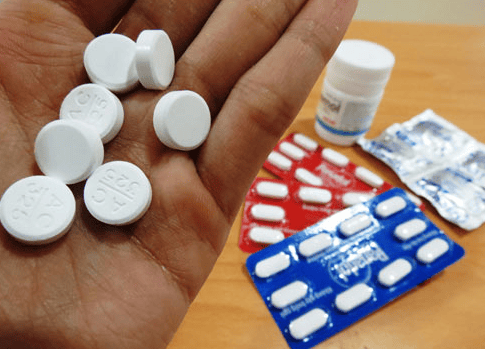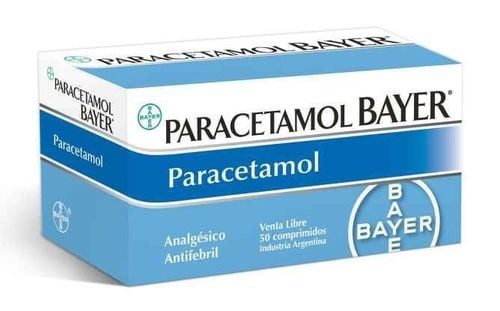This is an automatically translated article.
Many cases of fever above 38 degrees lasting for weeks, even months, but not caused by transient diseases. The diagnosis of persistent fever of 38 degrees of unknown cause is often very difficult and complicated. The disease can cause rapid death if not examined and intervened promptly.1. General information about fever above 38 degrees prolonged
Fever lasting over 38 degrees is a fairly common disease in the infectious disease department. In addition to fever, which is the most obvious sign of the disease, other faint signs may appear. Fever persists for weeks or months, and an accurate diagnosis cannot be made. Although the patient was treated with conventional drugs such as hypothermia or antibiotics, it was still ineffective.In 1961, a more specific definition of persistent fever of unknown cause was given by Petersdorf and Beeson as follows:
The patient's body temperature is always above 38.2 degrees Celsius, regardless of the measurement at any time. any. Fever persists for at least 3 weeks. Despite conducting enough clinical or laboratory tests within 1 week, no cause could be found. The diagnosis of persistent fever is sometimes complicated. Even in countries with advanced medicine, equipped with the most modern machinery, there are times when a patient has to be discharged from the hospital after a course of treatment without finding the cause of a prolonged fever.

Bệnh sốt kéo đôi khi rất khó chẩn đoán
The causes of fever over 38 degrees lasting can be classified into 4 categories as follows:
Classical causes: Fever persists for more than 3 weeks but no cause can be found after 3 days of admission (or 3 visits to the hospital). outpatient). Group of causes related to hospitalized patients: In case a patient with fever was admitted to the hospital for acute care, there were no signs of infection or incubation on admission. Immune deficiency group: If there is an uncertain diagnosis 3 days after the evaluation, which includes negative culture after 48 hours. HIV-associated etiology: Fever persists for more than 3 weeks in outpatients with confirmed HIV infection, or for more than 3 days in inpatients with confirmed HIV infection, if the diagnosis is uncertain after performing assessment measures.
2. Long-lasting fever over 38 degrees
In case of absolute necessity, medicine can be used to treat fever for a long time. Once you have a complete history, medical condition, symptoms, and tests, although it is not possible to make an accurate diagnosis, there is a treatment plan and careful consideration, then you can try treatment with drugs to treat the root cause. cause or mechanism, but should not be used indiscriminately or hastily, which can cause difficulties in diagnosis and treatment later.Non-steroidal anti-inflammatory drugs and antihistamines can be used to treat the disease in cases where the underlying cause of the disease cannot be found. In many people, this medication works to reduce fever.
Patients with fever due to immunodeficiency can be treated with broad-spectrum antibiotics, targeting the most common bacteria. For cases of fever due to a group of HIV-related causes, it is necessary to focus on HIV treatment with antiretroviral drugs, after which related symptoms or complications can be further treated.

Cần tham khảo ý kiến bác sĩ trước khi sử dụng các loại thuốc điều trị sốt kéo dài
3. How does taking care of a patient with a fever last?
3.1 Lowering fever properly First of all, it is important to understand that fever is a response to help the body increase its activity against infection, and promote specific and non-specific immunity. This is a protective response, so it should be respected.The use of antipyretic drugs also has negative effects on the body, such as causing blood damage, immunosuppression, reducing the body's resistance to pathogens, blurring the typical picture leading to difficulties in diagnosis guess.
However, in certain cases, especially prolonged fever in children, unsustainable body temperature, too high fever can cause very dangerous convulsions for children. Therefore, when necessary, it is possible to use physical methods to reduce fever such as using a fan, applying cold compresses, wearing light and airy clothes, preventing febrile seizures in children with sedatives and antipyretic drugs for children.
3.2 Replenish enough water for the body Patients with high fever inevitably lead to dehydration. For people with a fever above 38 degrees for a long time, unable to eat or drink anything, it is necessary to add water according to the following formula:
Daily amount of water + amount of water equal to 70% of solid food + 250ml of endogenous water + amount of water excreted in urine and faeces + respiratory tract waste + water evaporated through the skin.
Based on the above formula, it can be seen that the patient needs to add about 2-3 liters of water/day, until the urine output reaches 1 liter/day.
The addition of enough circulating water is even more necessary for children, because dehydration in children can also cause fever.

Người bệnh bị sốt kéo dài cần được bổ sung nước đầy đủ
Therefore, it is necessary for the patient to supplement enough from 2,100 - 3,000 kcal/day. The amount of protein added is not limited. The amount of vitamins used is as usual because in people with fever, vitamins are not broken down more than healthy people. Meals should be distributed into many small meals a day, choosing foods to suit the patient's taste.
3.4 Immobilization Patients with persistent fever above 38 degrees should not be absolutely immobilized, unless contraindicated, to avoid thrombosis. The patient may be seated in a chair for several hours a day.
For detailed advice about the disease, please come directly to Vinmec health system or book online HERE.
MORE:
What is a persistent fever in children? How should it be handled? Distinguish common fever, viral fever and dengue fever Viral fever in adults lasts for how many days? Do you need to go to the hospital?













